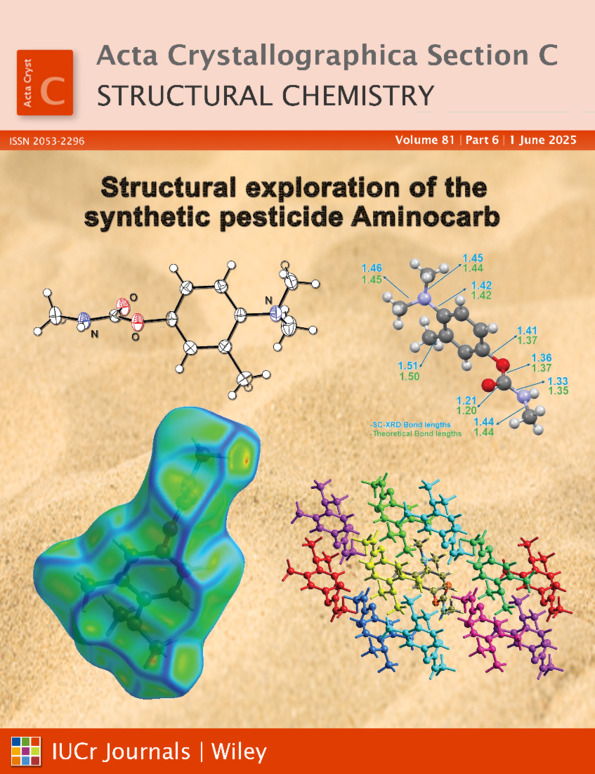Topological structural diversification of zinc coordination polymers caused by the spacers of different dicarboxylates
Abstract
As a new generation of multi-functional materials, crystalline coordination polymers have attracted widespread attention due to their fascinating framework structures, interesting topologies and potential applications. Two new coordination polymers, namely, poly[[μ2-trans-1,2-bis(pyridin-3-yl)ethylene-κ2N:N′]bis(μ3-terephthalato-κ3O:O′:O′′)dizinc(II)], [Zn2(C8H4O4)2(C12H10N2)]n or [Zn2(tp)2(3,3′-dpe)]n, (I), and poly[diaqua[μ2-trans-1,2-bis(pyridin-3-yl)-ethylene-κ2N:N′]bis(μ2-furan-2,5-dicarboxylate-κ2O:O′)dizinc(II)], [Zn2(C6H2O5)2(C12H10N2)(H2O)2]n or [Zn2(fdc)2(3,3′-dpe)(H2O)2]n, (II), have been prepared by the hydrothermal reactions between Zn(NO3)2·6H2O and trans-1,2-bis(pyridin-3-yl)ethylene (3,3′-dpe) with two similar dicarboxylic acids, i.e. terephthalic acid (H2tp) and furan-2,5-dicarboxylic acid (H2fdc), respectively. The coordination framework of (I) is a 3D pcu net with the point symbol 41263. The void space of the single framework in (I) is filled by the mutual interpenetration of two crystallographically equivalent networks, forming a threefold interpenetrating 3D architecture. Compound (II) is a 2D 3-connected coordination network parallel to the bc plane with the Schläfli symbol 63. Neighbouring 2D coordination networks are further connected to each other via hydrogen-bonding interactions to produce a 3D supramolecular framework. The thermal stability and photoluminescence properties of these two coordination polymers have also been investigated.




